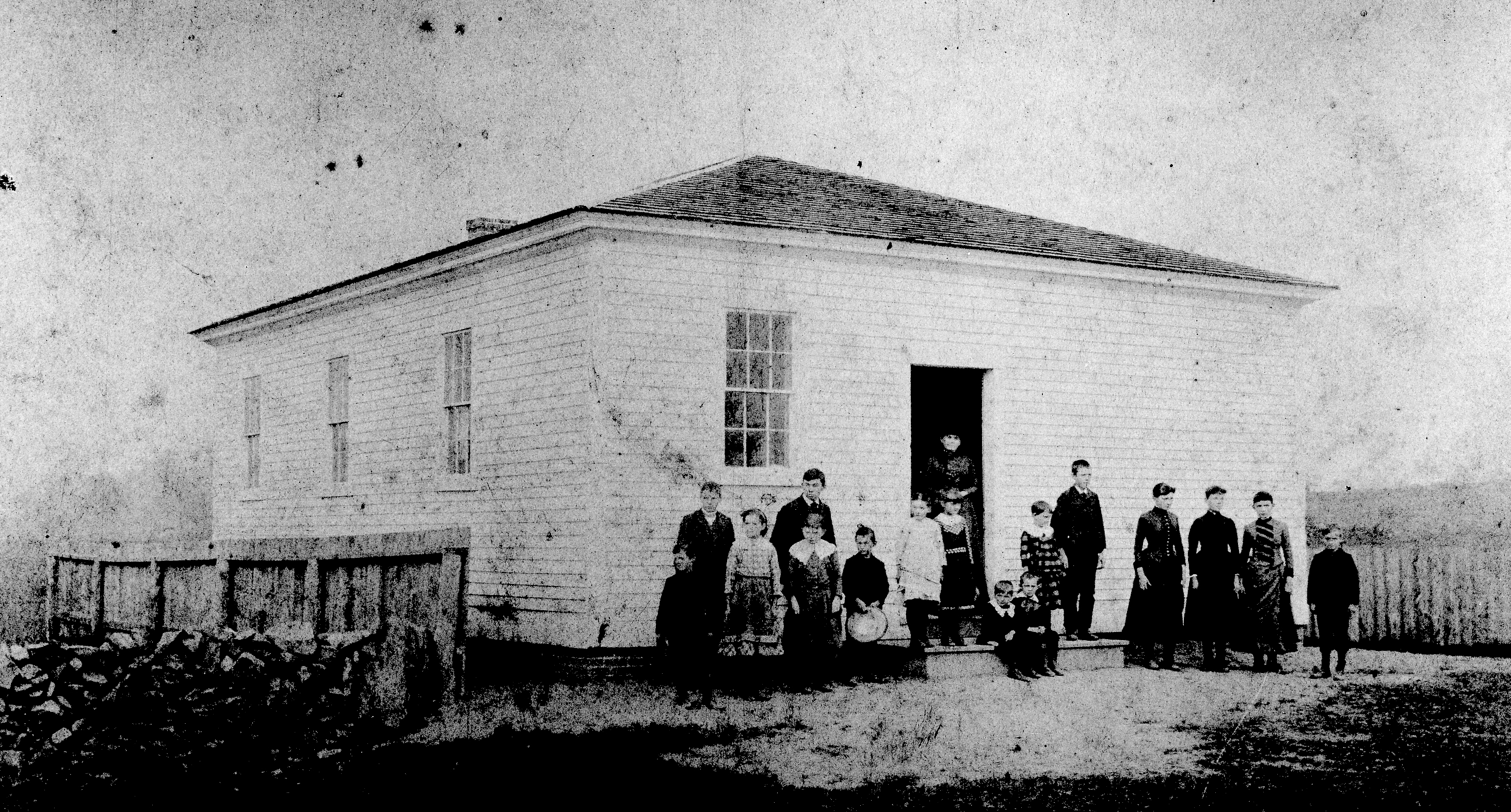Disclaimer
The Dover Public Library website offers public access to a wide range of information, including historical materials that are products of their particular times, and may contain values, language or stereotypes that would now be deemed insensitive, inappropriate or factually inaccurate. However, these records reflect the shared attitudes and values of the community from which they were collected and thus constitute an important social record.
The materials contained in the collection do not represent the opinions of the City of Dover, or the Dover Public Library.
Upper Factory School
The land for the school was given by Jonathan Kimball. The one room building was constructed where the first house on Heather Lane now sits in 1819 at a cost of $292.82 cents. The school house was thirty feet square and tolerably high posted, fireplace in the east end and seats placed on an inclined floor; the rear row of seats two feet higher than the level of the floor. Sumner D. Sterling, his brothers and sisters went to school there, grades one through eight. Sumner later drove the horse drawn school barge.

The school was established to accommodate the residents of Williamsville and the surrounding area. Williamsville was named for John Williams who built the first cotton mill in Dover about 1814. It and the village were along Upper Factory Road between the Cochecho River and Brick Street, now Sixth Street. The settlement also included a grist mill, machine shop, blacksmith shop, store house, seven dwelling houses and two barns, all company owned. There were several private residences on factory grounds as well.
(text accompanied photograph, author unknown)
This historical essay is provided free to all readers as an educational service. It may not be reproduced on any website, list, bulletin board, or in print without the permission of the Dover Public Library. Links to the Dover Public Library homepage or a specific article's URL are permissible.
